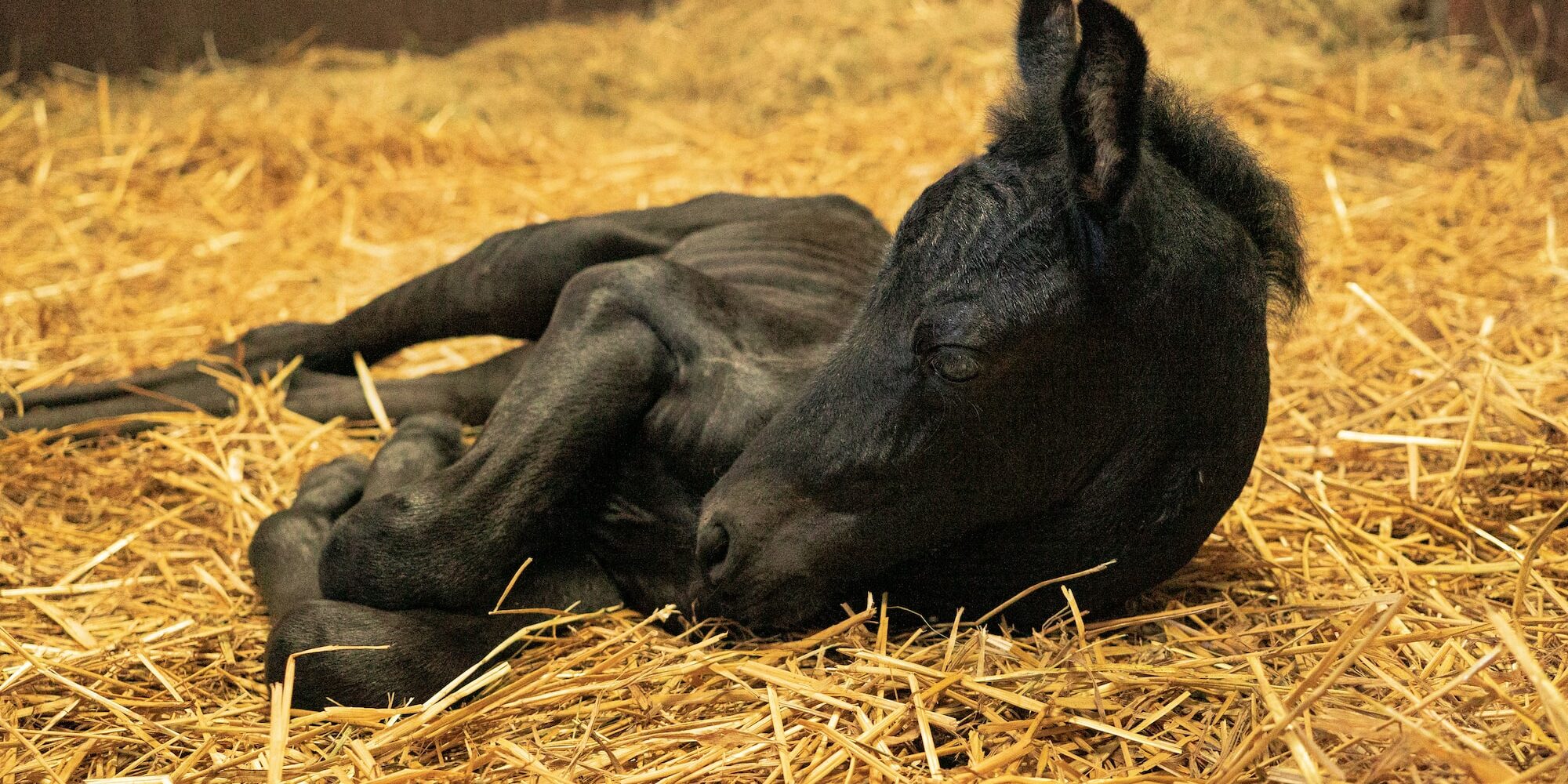Are you ready for foaling?

Your mare should be in a good body condition with a nice coat. It’s recommended to feed them a good quality broodmare mix and increasing their maintenance feed by 20% during the last 3 months of pregnancy.
Do you know your pregnant broodmares selenium status?
Selenium is an important mineral for immune function. It is transferred to the fetus through the placenta before birth and after the foals born in the mare’s milk.
Booster vaccination and wormer
Broodmares should be given a pre foaling booster vaccination and wormer 4 – 6 weeks before foaling. This boosts mares antibodies to tetanus [plus strangles] so the foal gets a boosted supply of antibodies in colostrum.
Foaling alarm or booked at foaling property
Have you decided if your mare will be foaling at home or at a foaling property? As it is difficult to predict when a mare will foal, monitoring them in the last stage of pregnancy can lead to sleepless nights and sometime the safest option is sending your mare to a foaling property with 24 hour monitoring. If you are planning to have your mare foal at home it’s a good idea to invest in a foaling alarm. There are several types available which can be fitted to your mare’s head-collar sounding the alarm when your mare lies down to foal.
Prepare a foaling kit with the following.
- a thermometer
- a watch, pen and notebook (or phone) for recording times
- a flashlight
- iodine spray for umbilicus
- hand cleanser or soap
- lube and foaling ropes
- tail bandage
- Buckets and towels (for warm water and the placenta)
- and emergency contact numbers for your vet etc
What to look for during the foaling
Stage 1 – Labour (Lasts 1 – 5hrs)
- Your mare will be restless and may be sweaty or pacing aimlessly
Stage 2 – Labour following water break (20min – 45min)
- Simplistically labour begins when the water breaks.
- A white membrane should appear with two front feet and the nose enclosed within and your mare will be straining in waves while the foal is expelled.
- Clean the membranes from nasal passages.
Stage 3
- Preferably the placenta should be expelled within 6 hours.
- The foal should stand within an hour and sickle within 3 hours.
- It is important to check foal is latching on and actually swallowing milk before heading back to bed
- If you want to check the colostrum quality with a brix refractometer, we suggest that you grab a small sample of colostrum (approx. 10ml) within these 3 hours.
If you want to sleep easy – it is a good idea to have a blood sample tested for IGG levels after 24hrs. This will indicate if your foal has received enough good quality Colostrum to enable it have a strong immune system for first 3 – 4 months of life.
Problem to be aware of and to look out for…
- Stages lasting longer than indicated above
- Foal presents without 2 feet and nose. (If you spot 1 foot and nose or nose only – you should push them back in and call your vet immediately).
- Red bag rather than white bag – if you see this it is likely that the placenta is separating prematurely, be prepared to break membranes and get foal out as quickly as possible.
- An uncontrolled haemorrhage
- A weak and lethargic foal, doesn’t stand within 3 hours.
- If your foal doesn’t nurse/pass faeces and urinate properly
- If your foal has diarrhoea. (Familiarise yourself with what meconium is and looks like).
- If your foal has swollen or abnormal joints or limbs
- If the mares colostrum is poor quality (we may need to supplement or give plasma substitute).
The GOOD NEWS
Statistically 94% of mares foal normally without assistance
The other 6%…
- approx. 3% have easily remedied problems
- and 3% have serious issues that can often result in a negative result even with all the help in the world.
In other words –chances are on your side but the proverbial happens!!!






